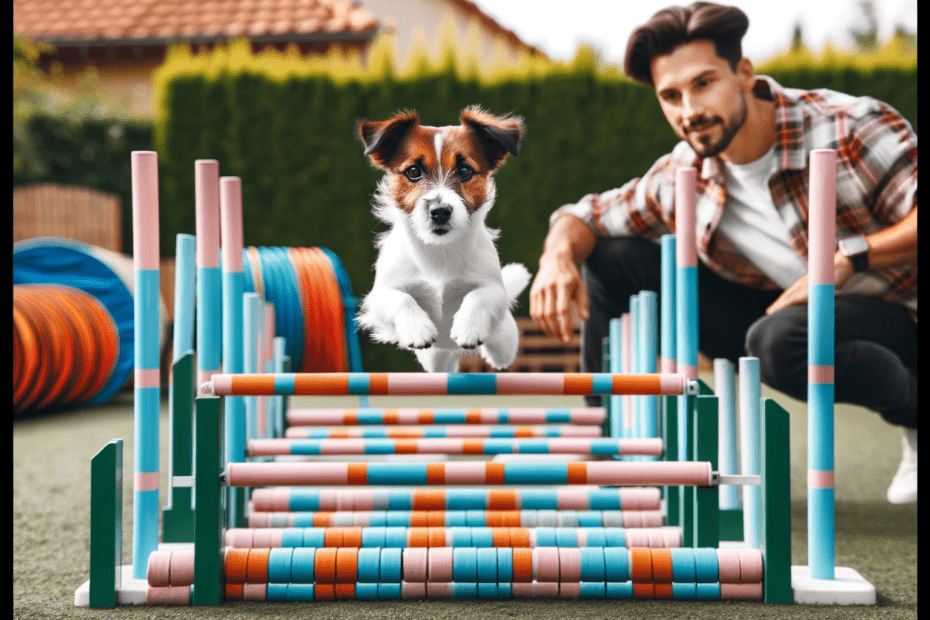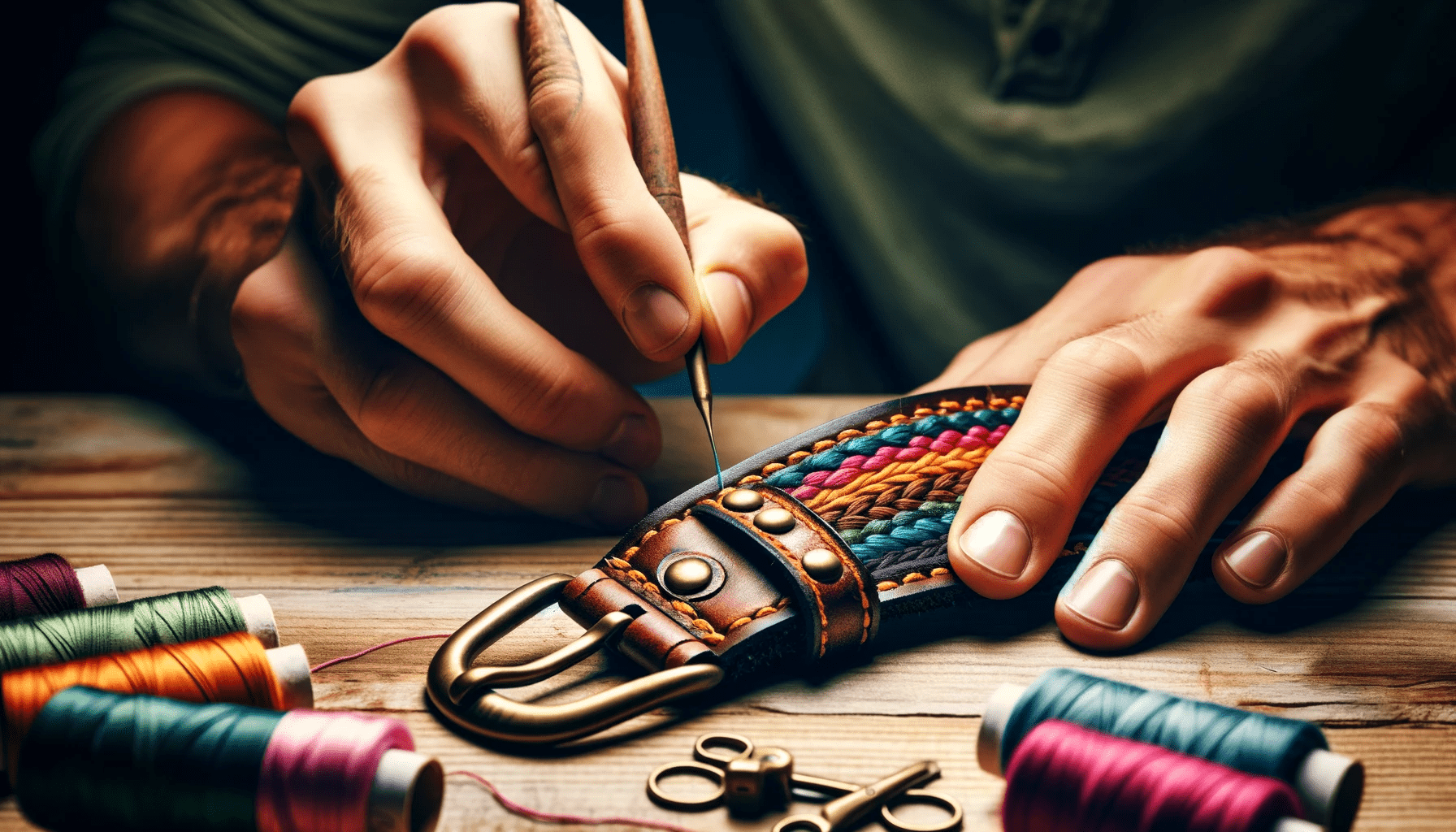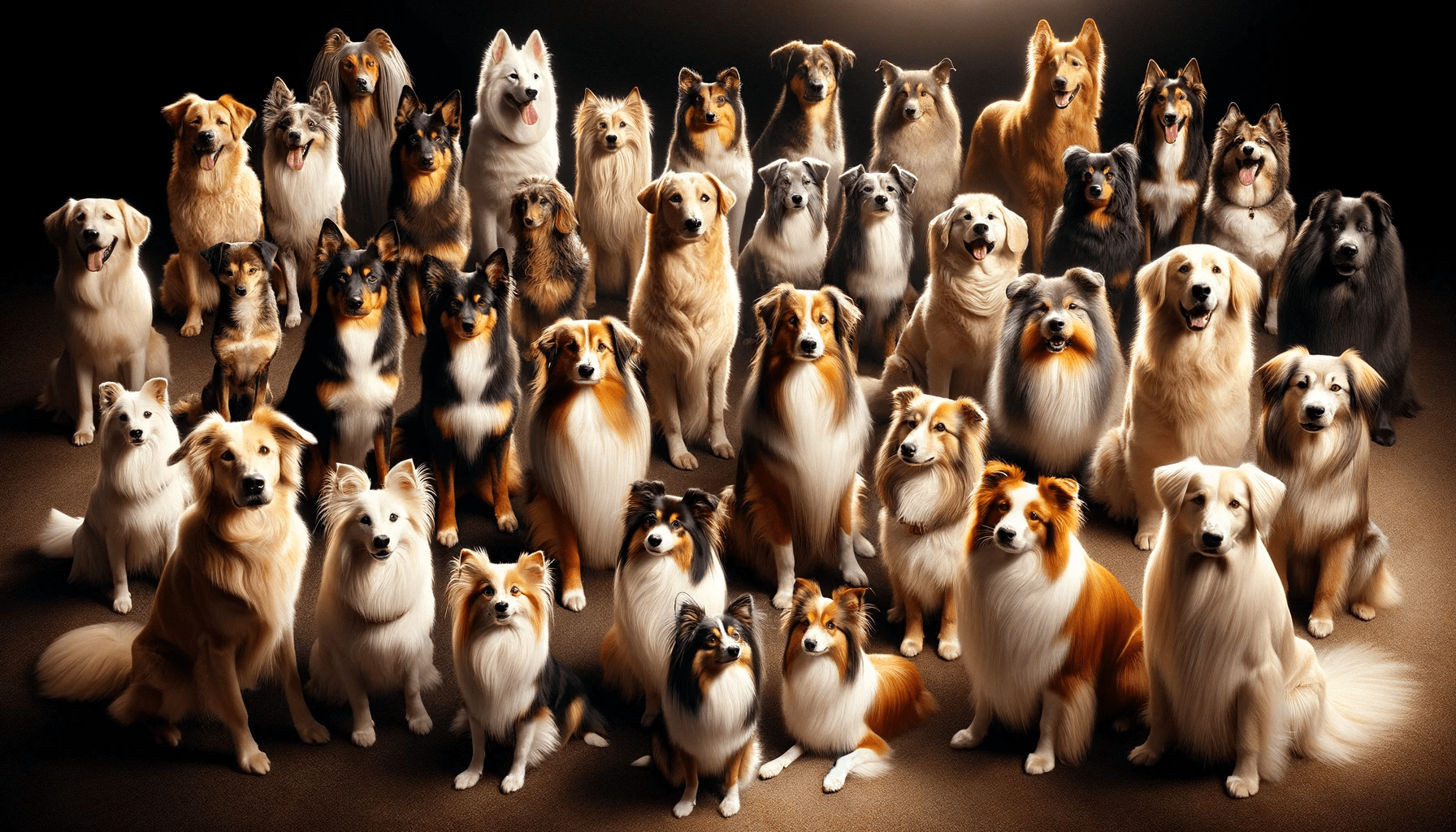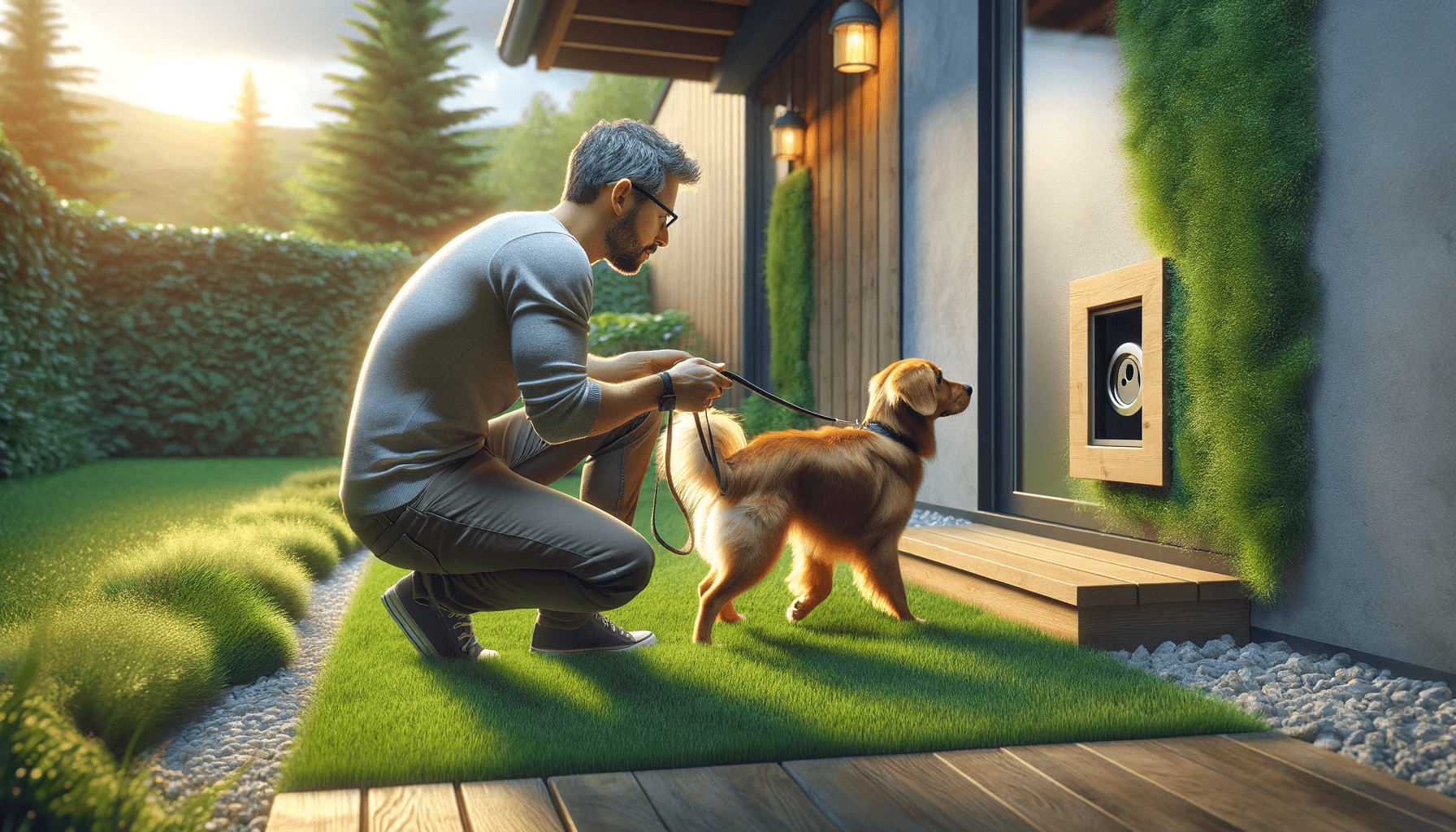Are you ready to take your dog's agility skills to the next level?
In this expert guide, we'll share trusted techniques for advanced dog agility that will help you and your furry friend reach new heights.
From mastering complex obstacle sequences to enhancing speed and precision, we'll show you how to fine-tune your dog's skills through conditioning exercises and competition simulations.
Get ready to wow the crowd and impress the judges with your dog's advanced agility performance!
Key Takeaways
- Advanced agility training requires the use of specialized equipment such as A-frames, weave poles, dog walks, and seesaws to improve balance, coordination, and confidence.
- Conditioning exercises such as plyometric jumps, balance exercises, interval training, and strength training are essential for enhancing overall physical fitness and performance on the agility course.
- Advanced handling techniques, including the front cross and rear cross, help efficiently change direction and improve agility skills. These techniques should be practiced in a controlled environment with positive reinforcement.
- Teaching complex obstacle sequences requires timing, precision, breaking down obstacles into smaller components, improving reaction time, perfecting footwork, and clear verbal cues. Visualizing the course is also important.
Advanced Agility Equipment for Dogs
Now let's explore the advanced agility equipment that you can use to take your dog's training to the next level. When it comes to advanced agility courses and training methods, having the right equipment is crucial. These tools not only enhance your dog's abilities but also ensure their safety during training sessions.
One essential piece of advanced agility equipment is the A-frame. This tall, triangular structure challenges your dog to climb up one side and descend down the other. It helps improve their balance, coordination, and confidence.
Another valuable piece is the weave poles. These sets of vertical poles encourage your dog to weave in and out of them quickly and accurately, enhancing their speed and agility.
Additionally, the dog walk is a must-have in advanced agility training. This elevated walkway with ramps at each end tests your dog's balance and focus as they traverse it.
The seesaw is another equipment that helps develop your dog's core strength and stability. It teaches them to control their movements while balancing on a moving platform.
Remember, when using advanced agility equipment, always prioritize safety. Inspect the equipment regularly for any damage or wear and tear. Also, ensure that your dog is properly warmed up before each training session to prevent injuries.
Conditioning Exercises for Advanced Agility Training
To further enhance your dog's advanced agility training, incorporate conditioning exercises that target their strength, flexibility, and endurance. These exercises are essential for improving your dog's overall physical fitness and performance on the agility course.
Here are four advanced conditioning exercises that you can incorporate into your training routine:
- Plyometric Jumps: Set up a series of hurdles or jumps at varying heights and distances. Encourage your dog to jump over them quickly and explosively, focusing on power and agility.
- Balance Exercises: Use balance boards or wobble cushions to challenge your dog's stability and core strength. This will help improve their body awareness and control, making them more agile on the agility course.
- Interval Training: Incorporate short bursts of high-intensity exercises, such as sprints or quick direction changes, followed by periods of rest. This will improve your dog's anaerobic fitness and their ability to recover quickly between obstacles.
- Strength Training: Implement exercises that target your dog's muscles, such as lunges, squats, and push-ups. Use your dog's body weight or resistance bands to add intensity and challenge their muscles.
Incorporating Advanced Handling Techniques in Agility Training
Enhance your dog's advanced agility training by incorporating advanced handling techniques that optimize their performance on the agility course. Incorporating handling techniques in your training routine can take your dog's agility skills to the next level. These techniques involve precise movements and communication between you and your dog, allowing for seamless navigation through complex courses.
One advanced handling technique is called the 'front cross.' This technique requires you to cross in front of your dog while they're in motion. By doing this, you can change your dog's direction efficiently and effectively. This technique is especially useful when there are tight turns or obstacles close together on the course.
Another technique is the 'rear cross.' This involves crossing behind your dog while they're in motion. The rear cross is beneficial in situations where you need to quickly change your dog's direction while maintaining their speed and momentum.
Incorporating these advanced handling techniques into your training sessions won't only challenge your dog but also improve their agility skills. Start by practicing these techniques in a controlled environment, gradually increasing the difficulty as your dog becomes more proficient. Remember to reward your dog for their efforts and provide them with plenty of positive reinforcement.
Teaching Complex Obstacle Sequences in Advanced Agility Training
When it comes to teaching complex obstacle sequences in advanced agility training, timing and precision are key. You need to be able to anticipate your dog's movements and provide clear cues at the right moment.
Breaking down the obstacles into smaller components can also help your dog understand and navigate the sequence more effectively.
Timing and Precision
Mastering timing and precision is crucial for teaching complex obstacle sequences in advanced agility training. To ensure you and your dog perform at your best, here are four key techniques to focus on:
- Improving reaction time: Quick reflexes are essential in navigating through challenging agility courses. Incorporate exercises that enhance your ability to react swiftly to cues and changes in the course.
- Perfecting footwork: Your footwork sets the pace and directs your dog's movements. Practice precise foot placement and learn to move with agility and grace, allowing for smooth transitions between obstacles.
- Visualizing the course: Mental preparation is just as important as physical training. Visualize the entire course before running it, imagining each obstacle and the path you and your dog will take.
- Using verbal cues effectively: Clear and concise verbal cues help your dog understand what you expect. Practice delivering commands with precision and consistency, ensuring your dog responds promptly and accurately.
Breaking Down Obstacles
To effectively teach complex obstacle sequences in advanced agility training, it is important to break down barriers and analyze obstacles. By breaking down the sequence into individual obstacles, you can focus on teaching your dog the correct technique for each one. It is crucial to ensure that your dog understands and can perform each obstacle independently before moving on to chaining them together. Use positive reinforcement and rewards to motivate and encourage your dog throughout the training process. Gradually increase the difficulty by adding more obstacles and varying the sequences. Obstacle analysis is crucial to identify any weaknesses or areas for improvement. By breaking down obstacles and providing clear instruction, you can help your dog navigate complex sequences with confidence and precision.
Enhancing Speed and Precision in Advanced Agility Performance
Improving speed and precision is crucial for taking your advanced agility performance to the next level. To help you enhance your speed and precision, here are four trusted techniques:
- Improve your handling techniques: Working on your handling skills can greatly impact your dog's speed and accuracy on the course. Focus on your timing, body language, and cues to guide your dog effectively through the obstacles.
- Analyze advanced courses: Take the time to thoroughly analyze advanced courses before running them. Look for potential challenges, tricky sections, and opportunities for speed. By understanding the course layout and potential handling strategies, you can make better decisions on the field.
- Practice distance work: Distance work is a key component of enhancing speed and precision. Train your dog to perform obstacles and sequences from a distance, allowing them to cover more ground quickly while still maintaining accuracy.
- Incorporate speed drills: Implementing speed drills into your training routine can help improve your dog's overall speed and reaction time. Set up exercises that focus on quick turns, accelerations, and decelerations to build their speed and agility.
Mental Focus and Concentration Exercises for Advanced Agility Dogs
To continue enhancing your dog's agility performance, it's important to maintain their mental focus and concentration through targeted exercises. Mental focus exercises and concentration techniques are crucial for advanced agility dogs to excel in their training and performance. These exercises help your dog stay focused on the task at hand, block out distractions, and make quick decisions on the agility course.
One effective mental focus exercise is the 'look at me' command. Start by getting your dog's attention and then hold a treat in front of your face. Slowly move the treat from one side to the other, making sure your dog maintains eye contact with you. This exercise strengthens your dog's ability to focus on you, which is essential for agility training.
Another technique is the 'stay and wait' exercise. Have your dog sit or lie down and then give a command to stay. Gradually increase the distance between you and your dog while they maintain the stay position. This exercise helps improve your dog's concentration and self-control, as they learn to resist distractions and remain focused on your commands.
Incorporating mental focus exercises and concentration techniques into your dog's training routine will greatly benefit their agility performance. These exercises will sharpen their mental acuity, enhance their decision-making skills, and ensure they can navigate the agility course with precision and confidence.
Remember to be patient and consistent in your training, and you'll see impressive results in your dog's mental focus and concentration abilities.
Fine-Tuning Advanced Agility Skills Through Competition Simulations
Fine-tune your advanced agility skills by simulating competition scenarios. Competitions can be intense, with high stakes and distractions. By incorporating competition simulations into your training routine, you can prepare yourself and your dog for the real thing.
Here are four key ways to fine-tune your skills through competition simulations:
- Set up a mock competition course: Create a course that mimics the challenges and obstacles typically found in agility competitions. This will help you and your dog practice navigating through different obstacles in a timed and competitive environment.
- Practice mental agility exercises: Competitions require quick decision-making and mental focus. Incorporate exercises that improve your mental agility, such as timing drills, visualization techniques, and problem-solving tasks.
- Work on handling techniques: Use competition simulations to refine your handling techniques. Practice different handling maneuvers, such as front crosses, blind crosses, and serpentines. This will help you become more efficient and effective in guiding your dog through the course.
- Emulate the competition atmosphere: Create an environment that mimics the energy and distractions of a real competition. Play crowd noises, use timers, and introduce distractions like other dogs or loud noises. This will help you and your dog stay focused and perform under pressure.
Frequently Asked Questions
What Are Some Common Mistakes to Avoid When Using Advanced Agility Equipment for Dogs?
When using advanced agility equipment for dogs, it's important to avoid common mistakes that can lead to injuries. To prevent accidents, focus on proper technique, maintaining equipment, and gradually increasing difficulty levels.
How Long Does It Typically Take for a Dog to Master Conditioning Exercises for Advanced Agility Training?
It typically takes some time for a dog to master conditioning exercises for advanced agility training. However, the benefits of these exercises are worth it as they greatly improve your dog's training progress and overall performance.
Are There Any Specific Safety Precautions to Keep in Mind When Incorporating Advanced Handling Techniques in Agility Training?
When incorporating advanced handling techniques in agility training, it's crucial to prioritize safety precautions. Make sure to create a secure environment, use proper equipment, and gradually introduce new techniques to avoid overwhelming your dog.
What Strategies Can Be Used to Teach Dogs Complex Obstacle Sequences in Advanced Agility Training?
To teach your dog complex obstacle sequences in advanced agility training, focus on integrating mental challenges. Use a variety of strategies, such as breaking sequences into smaller parts, using verbal and visual cues, and rewarding success.
How Can Handlers Improve Their Timing and Communication With Their Dogs to Enhance Speed and Precision in Advanced Agility Performance?
To improve your timing and communication with your dog in advanced agility, use effective cues and body language. Reinforce positive behavior and give clear commands to enhance speed and precision.
Conclusion
Congratulations! You're now equipped with the trusted techniques for advanced dog agility.
By incorporating advanced agility equipment, conditioning exercises, handling techniques, and obstacle sequences, you can enhance your dog's speed, precision, and mental focus.
Don't forget to fine-tune their skills through competition simulations.
With dedication and practice, you and your furry companion are ready to take on the exciting world of advanced dog agility.
So, get out there and have a blast while showcasing your dog's incredible talent and agility!






